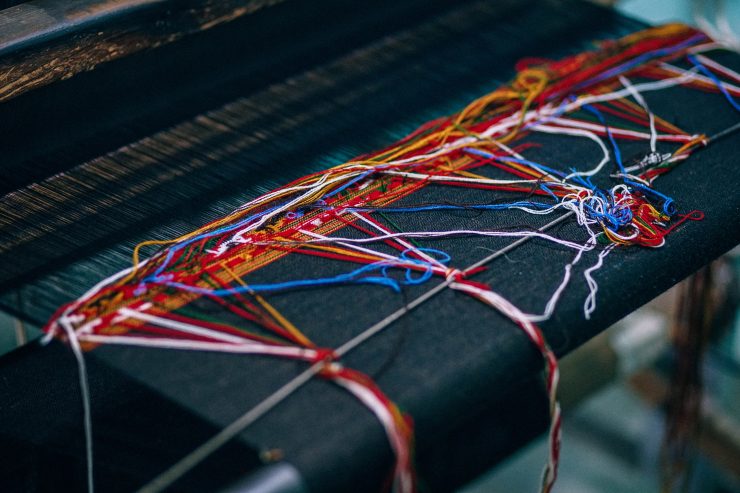Design and innovation, these are two concepts that broke in the world of fashion today. Jeanne Vicerial, PhD student at SACRe (Paris Sciences & Letters (PSL) research university Paris), is working on an applied design thesis in research and innovation, within the EnsAD Lab, echoing these trends. The 26-year-old, with black hair and graphic outfit on her back, also gives classes at the Condé school and co-founded a creative studio, “Clinique Vestimentaire”. What drives her? Fashion as an anatomical object, and at the same time as a vector of sustainable development – which has become indispensable for the textile industry.
Hello Jeanne! How do you integrate the idea of sustainable development into your design?
For the new generation, of which I am a part, sustainable development is not even a question: it is obvious. In the pieces I created within the studio we founded with my collaborator Jennifer Chambaret – “Clinique Vestimentaire” – we create according to mankind and its anatomy, looking for optimizations of matter and fabric scraps. I was inspired by the Dutch fashion designer Li Edelkoort, [who signed a tribune in Libération in 2015, evoking the death of the current fashion economy]: she speaks of a system fallen ill, stranded, at the end of the race.
In your opinion, what is the link between tailor-made and circular economy?
During my studies at Arts Déco, I was asked to do a project collection and on this occasion, I thought it would be great to make a custom collection. I remembered my costume studies, which consists of making unique pieces, especially thanks to the presence of a model. We must take into account the individual. This is what I did while focusing more specifically on human anatomy. So I realized a textile model taking over the muscular model, hence the name of my studio “Clinique Vestimentaire”. This dress is made of a single thread of 150 km, which takes the form of the backbone, and engages no fall. This piece also cost very little – but not regarding time, I spent two months on it! To do this, I would collect reels from companies or fashion houses, from the leather and nylon-based industry. As it’s knitwear, I do not produce any waste. For this graduation collection, I became my own machine, because I sewed everything by hand with a surgeon’s needle. Hence the idea of automating.
Fashion has become multidisciplinary. How do you envisage working with sectors like robotics?
When I wanted to automate my concept, I thought I could be able to make tailor-made, but industrial. For these creations, sort of portable x-rays, I have partnered with the Ecole des Mines-ParisTech, in mechatronics [discipline combining mechanical, electronic and computer, ed] and robotics. Thirty engineering students help me build a fairly basic but very precise prototype that allows me to do in one hour what I did in three days at the pin. The result is a zero drops on an industrial scale, even if it is more a consequence than a starting will. At first, the dialogue with these other disciplines was not obvious because we had to learn to speak the same language. My only query is that I can pick up my hand anytime on the machine.
What other techniques do you use to offer alternative solutions for slow fashion?
In the studio, we make ready-to-wear but tailor-made. We have indeed developed adaptable size systems, which range from 36 to 42, thanks to a system of folds, quite conventional in the end. The garment thus adapts over time. So in terms of lifespan, it fits in a design opposite to disposable fashion. For us, it does not matter that a fashion piece costs a little more, as long as it can follow its wearer for a longer time.
